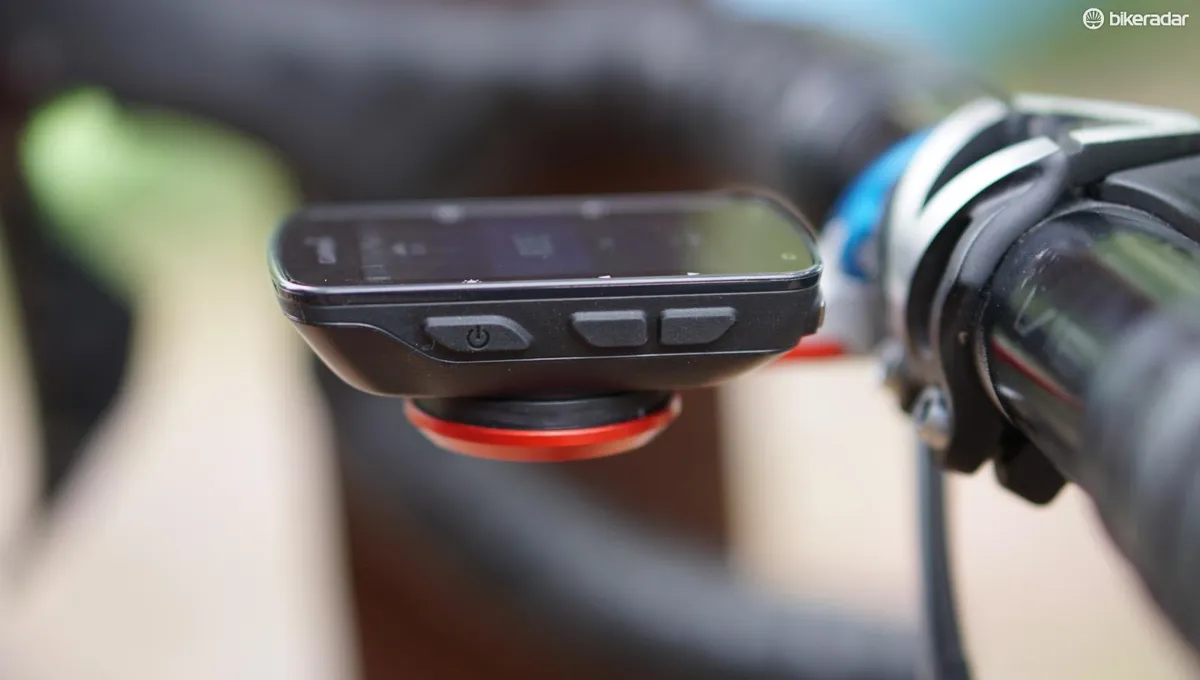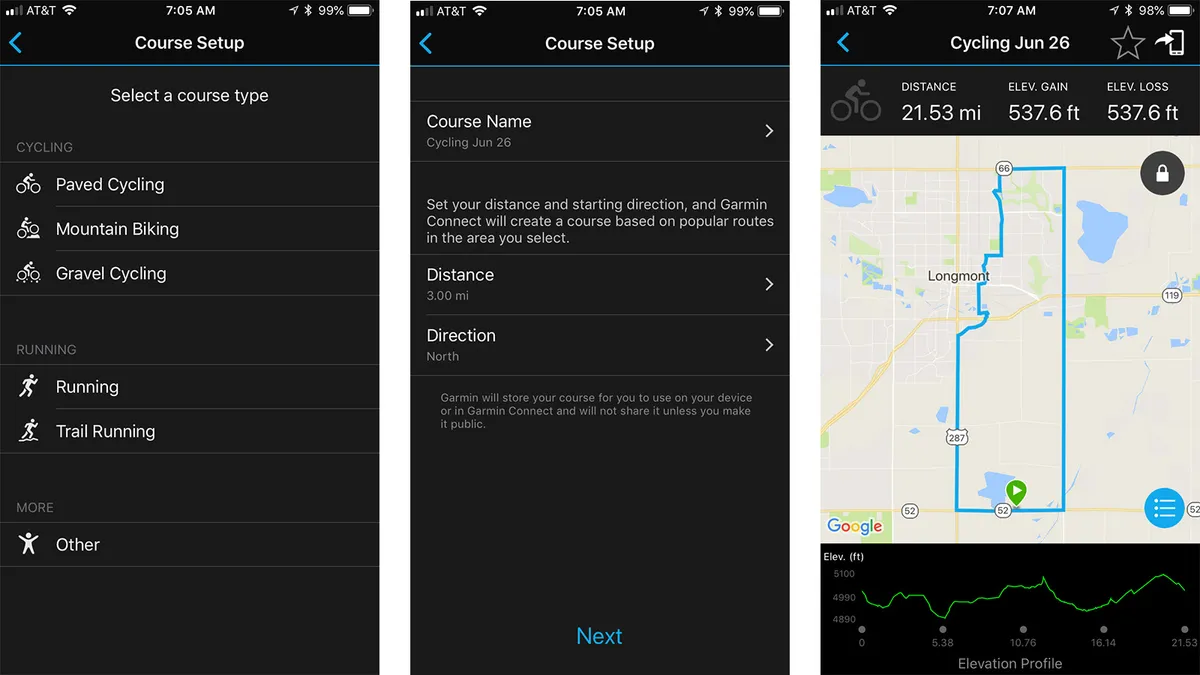Garmin has more cycling computers than many of us can keep track of, and the new Edge 520 Plus falls in the top third of the GPS giant’s range, targeted at performance-oriented riders.
- Best GPS devices for cycling 2019
- Best GPS and smartwatches for cycling: how to choose the right one for you
- Wahoo vs Garmin: which bike computer should you choose?
Think business class, not first class. The 520 Plus adds a few features to the sturdy, button-controlled 520, but the most useful are the improved battery life and automatic re-routing while following a course.
Editor's note, August 2019: While the Garmin Edge 520 Plus is still available from some retailers, it has now been superseded by the hugely capable Garmin Edge 530, which we've also reviewed.
It is a dependable unit for everyday riding and the navigation is excellent. For most performance-minded riders, it's a great computer.
Garmin Edge 520 Plus highlights
- All the standard metrics
- Color screen, seven buttons
- ANT+ and Bluetooth, but no WiFi
- Advanced fitness metrics when used with power and HR
- Incoming call/text notifications
- Up to 15 hours claimed battery life without navigation, about nine hours actual life with navigation
- Preloaded with Strava Live Segments, Strava Routes and TrainingPeaks Connect IQ apps
- Pairs with Garmin Radar and smart headlight

Targeted at the performance-oriented rider
Like the 520, the 520 Plus is not a touchscreen, but for many riders that is a positive thing. Instead, seven buttons control the operation. (Di2 users can change screens and execute other functions from the shifter hoods with the use of a D-Fly add-on.)
ANT+ and Bluetooth mean easy connections to your heart-rate monitor, power meter and phone. Automatic uploads via your tethered phone are handy; you’ll never want to return to plugging a GPS unit into a computer.
In addition to all the usual metrics that come on even the cheap GPS units these days, the 520 Plus offers a number of HR- and power-centric features, such as tracking your functional threshold power (What is FTP for cycling?), your VO2 max and — after each ride — your estimated recovery time.
Although I made fun of these things at first as educated guesstimates, they have proven to be fairly accurate in my testing over the last two years. The physiology analytics company FirstBeat is behind these calculations.
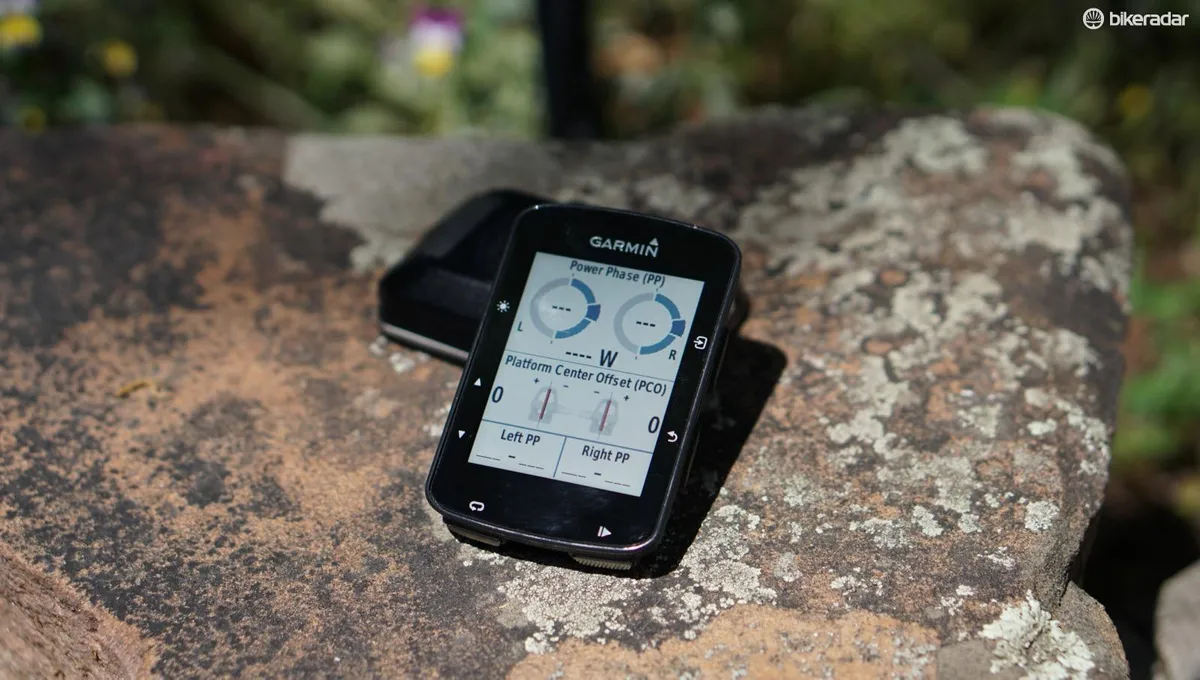
You can control the layout of your desired number of pages through preset options. And then there are dozens more visual layouts such as color tachometers you can get through Connect IQ, Garmin’s app platform.
A few apps come pre-installed, such as Strava Live Segments and Strava Routes. Live Segments lets you race the best time of yourself, the KOM/QOM or the person just ahead of you that you follow. Unlike some Strava apps that just use average time over the course of a Segment, this one tracks in real time. So, for example, if a segment is up a climb then down a descent, your real time comparison will be accurate.
Other pre-installed Connect IQ apps include Best Bike Split Race Sync and TrainingPeaks. Best Bike Split is a modeling program that makes most sense for triathletes and time trialists, allowing you to project race times based on weight, power and aero drag for a given course.
The TrainingPeaks app is handy for riders who use the training plan service because it auto-populates the 520 Plus with your scheduled workout for the day, then walks you through it with color-coded targets for power and/or heart rate. You can't tailor the layout or the fields, though, which is a little annoying.

Edge 520 Plus versus the standard Edge 520: better navigation
Many pro racers use the standard Edge 520 because it has all the basic performance features one needs to race and train. (And, yes, many of them are contractually obligated to use a Garmin of some sort.)
In addition to all the usual variants of speed, time, power, heart rate, elevation, and distance, the Edge 520 offers good color mapping and navigation after you load in a course.
The 520 Plus improves upon the navigation with the inclusion of the Garmin Cycle Map, which means you get turn-by-turn navigation, off-course recalculation and back-to-start routing. Garmin Cycle Map is based on OpenStreet Map data. The 520 uses what Garmin calls basemaps. Visually, the two are quite similar; the primary difference is in the real-time calculations where the 520 Plus acts more like what you may be accustomed to in a car, or with Google Maps on your phone.
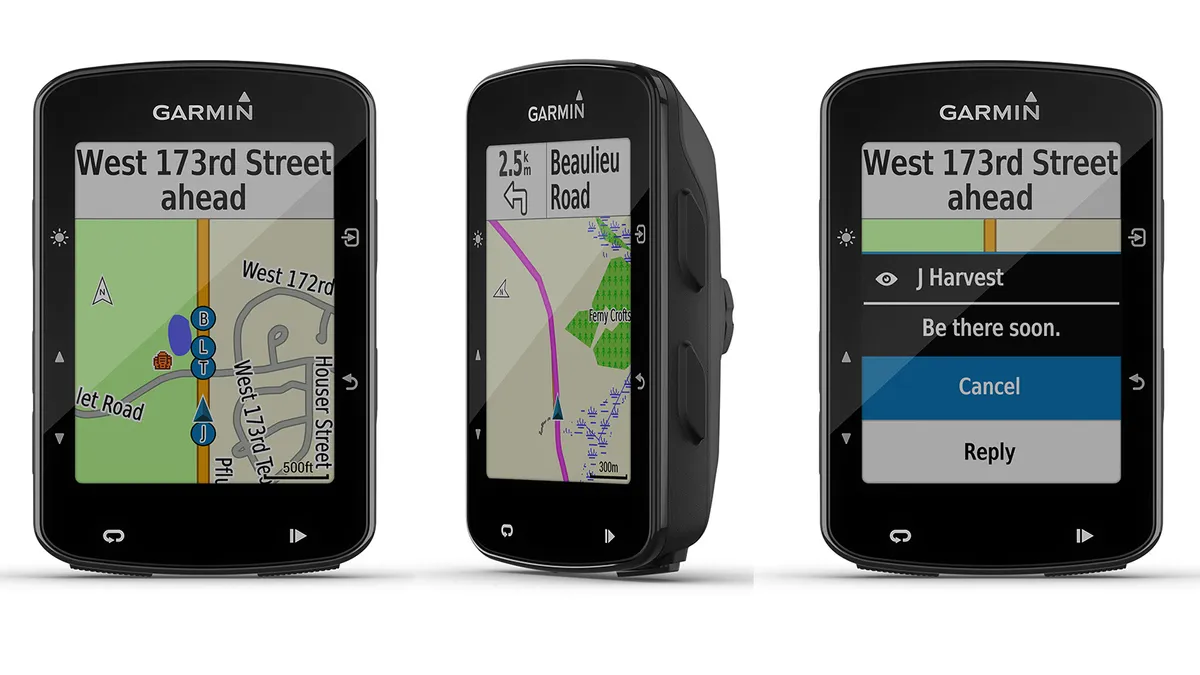
In my experience, the 520 Plus has vastly better battery life when using navigation than the 520. Both claim battery life "up to 15 hours", but the 520 will often die at about 4.5 hours using navigation. By contrast, I twice did 4.5 hour rides with the 520 Plus following a route; starting with a full charge, battery life was still over 50 percent at the end both times. So I would guesstimate total battery life at 8 or 9 hours with navigation on the 520 Plus.
Unlike the 820 or the 1030, you can't use the 520 Plus to create routes on the computer itself. You still have to either drag existing routes into the New Files folder when connected to a computer, or, if someone emails you a route, you can import that into the Garmin Connect app and then zap it into the 520 Plus with Bluetooth. (Garmin Connect also has a 'create route' feature, but it doesn't let you actually create a route; you just pick a distance and a direction and it makes one for you, which you can't modify. I recommend Strava's Route Builder, which also uses popularity for choosing roads, but lets you actually click exactly where you want to go.)

Other upgrades over the 520 include GroupTrack and rider-to-rider messaging.These require that your riding buddies also be on newer, high-end Garmin Edge computers that are tethered via Bluetooth to their smartphones. If those pieces are in place, you can visually track each other on the Edge 520 Plus map as little icons, and send each other preset messages on the computers.
I have used GroupTrack on other Garmin units a handful of times, and it can be useful when trying to connect with friends mid-ride or to keep track of everyone on a long climb. But it does require some buy-in from/cajoling of your riding buddies to get everything set up. I have yet to use messaging; my phone works for everyone I ride with and so far I know no one who has messaging set up.
Edge 520 Plus versus the Edge 820: fewer frills and no touchscreen
The Edge 520 and 820 families share the same body, the same basic features and the same size (2.3in) screen. But the 820 quickly diverges with a touchscreen that can adjust to ambient light and be put into battery save mode that can double battery life while still recording all the pertinent data.
The 820 also has WiFi, which is most handy for post-ride automatic uploads. Once you have it configured to your home network, the Edge 820 will automatically upload your rides to Garmin Connect — and/or Strava, TrainingPeaks, Today's Plan — whenever you finish a ride and the unit finds the signal.
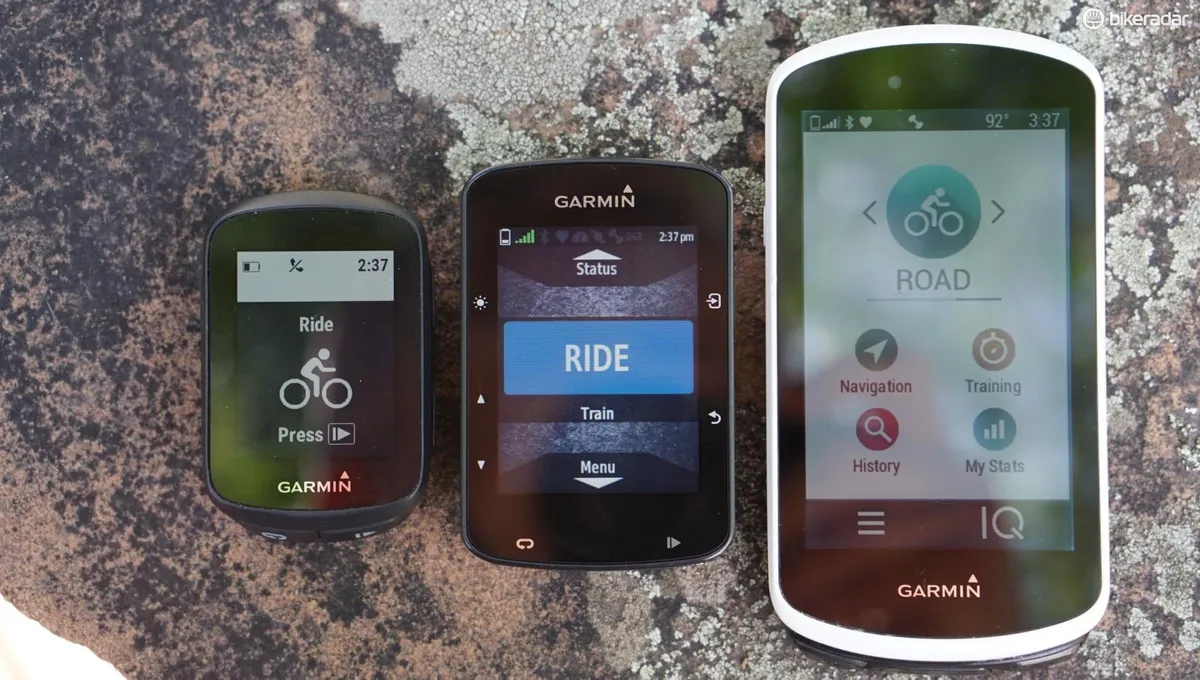
The Edge 820 also has a lot more navigation options. With the Edge 520 Plus, you can follow a route — after you create said route elsewhere and drag it into your New Files folder when the unit is plugged into a computer. With the 820, you can navigate to a destination by punching in an address on the unit or selecting a point on the map. (You can also follow a pre-created route.)
Both units give you turn-by-turn navigation with automatic rerouting.
In my experience with the 820 and 1030, the Garmin routing to a destination works, but won't always put you on the route a local would select. Also, Garmin continues to use auto-centric Points of Interest in its menus. (Driving to the closest airport? Handy. Riding a bike there? Pretty rare.)
The best practice is to use a route created by a local, and let Garmin's excellent turn-by-turn feature guide the way. All that to say, I don't feel like the 520 Plus is missing out too much from the 820 in route creation.
Edge 520 Plus versus computers from Wahoo, Lezyne and Stages
Wahoo has given Garmin a bit of competition with its original Elemnt and 520-sized Elemnt Bolt. The Bolt has a very similar feature set, but in black and white at a lower cost.
The Bolt is more smartphone-friendly than the 520 Plus, because you can use the app to configure the computer’s layout and put routes on it. But the Bolt’s navigation isn’t as sophisticated; if you go off-route, you won’t get any rerouting suggestions.
Lezyne has budget-friendly GPS units, with the oddly named Super Enhanced GPS being the closest to the 520 Plus. It has Strava Live Segments, navigation (including on-the-fly routing you can do with the phone app), incoming call/text notification and all the usual metrics you’d expect. The execution isn’t as polished though, with a chunky form factor, a smaller and lower-res screen and smaller buttons.

The power meter company Stages has a GPS computer called the Dash that is inferior to the 520 Plus in most ways, but worth mentioning for two reasons.
One, you can configure the screen however you like. It’s a clunky process, but if you want, say, 3sec power to be half the screen on the left and eight other metrics small at right, you can do that. And the clarity is good in sun.
The second notable thing about the Stages Dash is the workout functionality. The 520 Plus workout functionality is fixed in terms of layout and execution. The 520 Plus’ color is nice, but you can’t do things like view power at 3sec average; you only get 1sec power, which jumps around a lot.
Also, you can’t pause the workout without pausing your ride file. By contrast, the Dash lets you customize the screen layout and also lets you advance the work and rest intervals with a button, allowing for real-world conditions such as traffic and stoplights. (The Dash also auto-populates with workouts if you subscribe to Stages’ Link service, which is based on Today’s Plan.)
Bottom line: An excellent training computer with best-in-class navigation
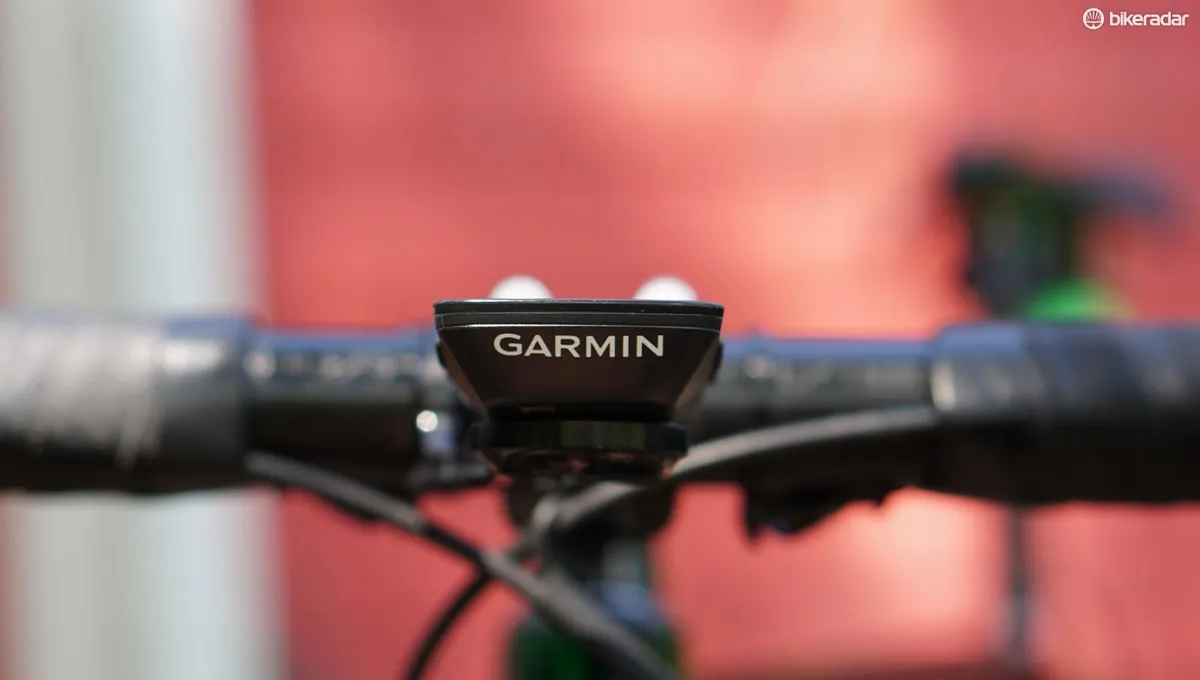
The 520 Plus isn’t a huge step forward from the Edge 520, but adding Garmin Cycle Maps with automatic rerouting is very welcome and very useable.
All the standard and many high-end metric are here, such as V02 max and FTP monitoring. The latter is something you can really use to inform your daily training.
ANT+ and Bluetooth make the basics of recording and uploading a ride with your peripherals easy, but the absence of WiFi means you still need to have your phone handy unless you want to plug in the 520 Plus to get your ride on Strava.

Note that the "up to 15 hours" battery life claim only applies when you are not following a route, but the 520 Plus seems to have about double the battery life of the 520 when following a route.
But if you want a computer to use for regular training and occasional navigation, the 520 Plus is a great option.


